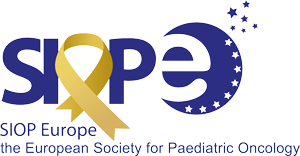This active group brings together many disciplines including paediatric oncologists, radiation therapists, neurosurgeons, neuroradiologists, psychologists, nurses and biologists with the aim of improving survival and quality of survival as well as understanding tumour biology and identifying novel therapeutic concepts for patients with embryonal tumours of the central nervous system.
Which tumours does the group deal with?
This working group was renamed last year following the publication of the revised World Health Organisation Classification of Brain Tumours in 2016. The original name for the group was medulloblastoma/PNET but it is now possible to classify most of the patients originally classified as having central nervous system primitive neuroectodermal tumours as other distinct diagnoses including pineoblastoma, embryonal tumour with multilayered rosettes (ETMR) CNS neuroblastoma with FOXR2 alterations, high grade neuroepithelial tumours (HGNET) with either the BCOR or MN1 genetic changes and Ewings sarcoma family tumour with CIC mutations. There is a separate working group for atypical rhabdoid teratoid tumours and so, even though they are embryonal tumours, they are not discussed in this group.
What studies are open?
The group has a long history of running trials for patients with medulloblastoma. Currently, SIOPE PNET5 MB is open for patients with standard risk medulloblastoma (link to PNET5 MB webpage). The PI is Stefan Rutkowski and the co-PI is François Doz. The patients are classified into standard and low risk groups using clinical, radiological, pathological and molecular criteria. The low risk group is defined as patients with the WNT subtype of medulloblastoma and the study for this group is a single arm de-escalation of therapy for the good risk group. In the remaining standard risk patients there is a randomisation between radiotherapy with or without concomitant carboplatin. The study is accruing well with the low risk arm having already reached its recruitment target. Recent amendments to this exciting study further improve the molecular characterisation of the patients and mandate genomic testing for certain tumours that may arise in patients with an inherited predisposition syndrome. New treatment arms for patients with WNT-HR MB, SHH-MB with TP53 mutation, and a registry for MB patients with germline mutations have also been introduced by amendment. This seminal study has already shown that real time radiology, pathology and molecular diagnostics are possible to stratify patients and includes real time review of radiotherapy plans. Important biological questions are being asked as part of the study and the patients are being followed for late effects using on-line data entry tools.
What studies are in development?
A study for patients diagnosed with high risk medulloblastoma is due to open later in 2019 (Sponsor University of Birmingham UK, PI Simon Bailey). Patients over 3 years of age who are not eligible for the standard risk study will be eligible for inclusion. The study risk-stratifies the group based on clinical, radiological, pathological and molecular criteria and it is expected that the same methodologies that are currently in use for SIOP PNET5 will be used. For certain groups the study will randomise the use of post induction hyperfractionated radiotherapy v standard radiotherapy v standard radiotherapy and high dose chemotherapy. There will be a randomisation for maintenance therapy post irradiation. There will be an up-front phase II window study for selected patient groups with the agents to be determined.
A study for young children with medulloblastoma is in development and will stratify patients into lower risk (SHH) and standard risk groups based on molecular biology. The co-PIs are Stefan Rutkowski and Christelle Dufour. The development of the standard risk arm is well advanced (with a randomisation between one and two cycles of high dose chemotherapy and a further randomisation to maintenance chemotherapy or not) but further discussions are needed for the lower risk group.
The tumours that were once bundled into the supratentorial PNET category are comprised of very small groups of patients. The current strategy is collection and validation of historical material and correlation with outcomes. The diagnosis is being centralised in many countries and is dependent on both molecular and pathological techniques (link to Rare Embryonal Tumour work)
Biological studies
The group has been at the forefront of including biological questions, and sampling high-quality biological material, in the studies it has run. This has borne fruit with the current inclusion criteria being dependent on molecular pathology analyses, disease sub-classification and risk-stratification schemes developed from previous trials. The discovery and validation of novel markers of prognosis are ongoing and it is hoped that further research will lead to the identification of alterations that are amenable to mechanism-of-action base therapy. There is work on analysing CSF samples as liquid biopsies that can be repeated at several stages in a patient’s clinical course. Knowledge of genetic alterations that predispose to medulloblastoma and alter the optimal therapy for patients is being improved and is now leading to alterations in therapeutic strategies.
Long term follow up studies
Understanding the long term outcomes of children we treat has been central to the development of studies over the last two decades. Work is ongoing to identify markers that are predictive of the severity of toxicity and it is hoped that intervention studies will be developed in the near future to see if the late effects observed can be ameliorated.
